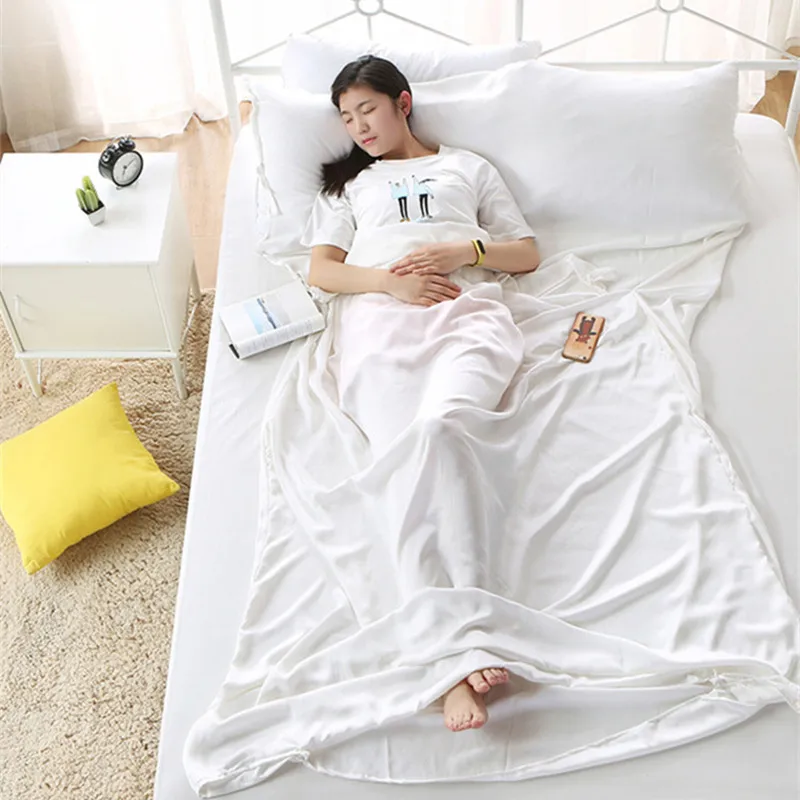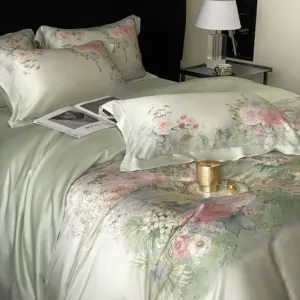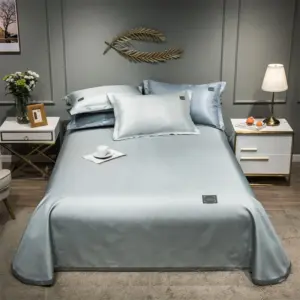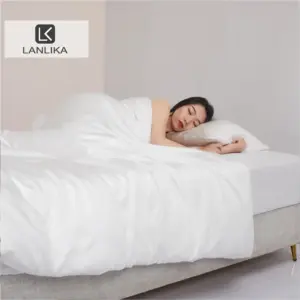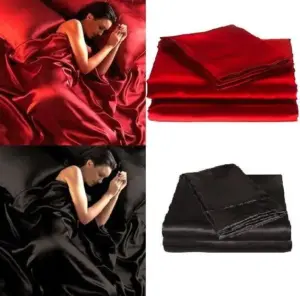Introduction to Silk and Vegan Alternatives
For thousands of years, silk has been revered as one of the most luxurious textiles in the world. This natural protein fiber, produced by silkworms, has adorned royalty and the wealthy across civilizations due to its incomparable softness, lustrous appearance, and remarkable properties. In recent decades, however, we’ve witnessed the emergence of vegan silk alternatives—materials designed to mimic the coveted properties of traditional silk without involving animals in the production process.
As consumer awareness grows about the ethical and environmental impacts of textile production, many people find themselves weighing the benefits and drawbacks of both options. Whether you’re concerned about animal welfare, environmental sustainability, material performance, or simply curious about these fabrics, understanding the traditional silk vs vegan silk comparison can help you make choices aligned with your values and needs.
This comprehensive guide explores the characteristics, production processes, benefits, and limitations of both traditional silk and its plant-based alternatives. By examining these materials across multiple dimensions, we’ll provide you with the information needed to decide which option best suits your preferences, whether for bedding, clothing, or accessories. The silk vs vegan silk comparison reveals surprising differences and similarities that might change how you view these luxurious fabrics.
Traditional Silk: Production Process and Properties
Traditional silk is a natural protein fiber primarily produced by the Bombyx mori silkworm, domesticated for silk production for over 5,000 years. The journey from silkworm to finished fabric involves several carefully controlled steps:
Sericulture: The process begins with cultivating silkworms, which feed exclusively on mulberry leaves. Farmers carefully control temperature, humidity, and feeding to ensure optimal cocoon production.
Cocoon Formation: After about 35 days of feeding, silkworms begin spinning cocoons, creating a continuous silk filament that can reach up to 1,000 yards in length. This remarkable feat takes 2-3 days to complete.
Harvesting: Traditional methods involve collecting the cocoons and exposing them to heat (usually steam or boiling water) to kill the pupae inside before they can emerge and break the continuous filament.
Reeling and Processing: Workers unwind the continuous filaments from multiple cocoons simultaneously, combining them to create silk thread of the desired thickness. These threads are then twisted, woven, or knitted into fabric.
The unique protein structure of silk gives it exceptional properties. Silk fibers consist primarily of two proteins: fibroin (the core structural component) and sericin (the “glue” binding fibroin elements). Premium silk quality is often measured in momme weight rather than thread count, with luxury bedding typically falling in the momme vs thread count silk guide range of 19-25 momme—balancing durability with optimal softness and drape.
Natural silk’s protein structure closely resembles human skin proteins, contributing to its remarkable properties:
- Exceptional tensile strength (stronger than steel of the same diameter)
- Natural elasticity allowing 20-25% stretch without damage
- Ability to absorb up to 30% of its weight in moisture without feeling damp
- Natural temperature regulation properties
What Makes Vegan Silk “Vegan”?
Vegan silk encompasses a diverse range of textile alternatives that aim to replicate the desirable qualities of traditional silk without using animal-derived materials. These alternatives rely on plant fibers, cellulose, or synthetic processes to achieve silk-like characteristics.
The main categories of vegan silk include:
Regenerated cellulose fibers: These include Lyocell, Tencel, and modal fabrics, which are created by dissolving plant cellulose (usually from wood pulp) and then extruding it into smooth, continuous fibers. The vegan silk sustainable production process often involves closed-loop systems that recycle chemicals and minimize waste.
Plant protein fibers: Soy silk, made from the waste protein in soybean processing, offers protein-based properties somewhat similar to traditional silk. The amino acid structure provides a naturally smooth texture.
Plant-derived materials: Fabrics made from bamboo, banana stems, lotus fibers, and pineapple leaves can achieve varying degrees of silk-like properties through mechanical and chemical processing.
Semi-synthetic options: These combine natural ingredients with technological processing to achieve specific silk-like qualities such as sheen, drape, and feel.
The how is vegan silk made process varies significantly depending on the base material, but generally involves harvesting plant fibers, processing them to extract cellulose or protein components, and then transforming those components into continuous filaments that can be woven into fabric. While traditional silk derives its properties from protein structures, most vegan alternatives rely on the arrangement of cellulose molecules or synthetic polymers to mimic silk’s characteristics.
Key Benefits of Traditional Silk
Traditional silk offers a range of benefits that have made it a coveted material for millennia:
Unmatched tactile experience: Genuine silk provides a distinctive soft, smooth texture against the skin with a natural luster that catches light in a way no other fabric can replicate. The drape of silk—how it falls and moves—creates an elegant, flowing appearance highly valued in fashion and home textiles.
Superior temperature regulation: Silk’s unique molecular structure allows it to adapt to body temperature, providing warmth in cool conditions while remaining breathable and cool in warm environments. This makes silk bedding comfortable year-round.
Natural hypoallergenic properties: Silk resists dust mites, mold, mildew, and many common allergens. Its tight weave and natural proteins create an environment less hospitable to these irritants compared to many other fabrics.
Skin and hair benefits: The smooth fiber surface of silk creates minimal friction against skin and hair, helping prevent sleep wrinkles and reducing hair breakage and frizz. Additionally, silk contains natural amino acids that can interact beneficially with skin.
Exceptional moisture management: Silk can absorb up to 30% of its weight in moisture while still feeling dry to the touch. This wicking ability helps maintain comfortable sleep by drawing moisture away from the body.
Durability with proper care: High-quality silk items can last for many years when properly maintained. The natural strength of silk fibers contributes to its longevity despite its delicate appearance.
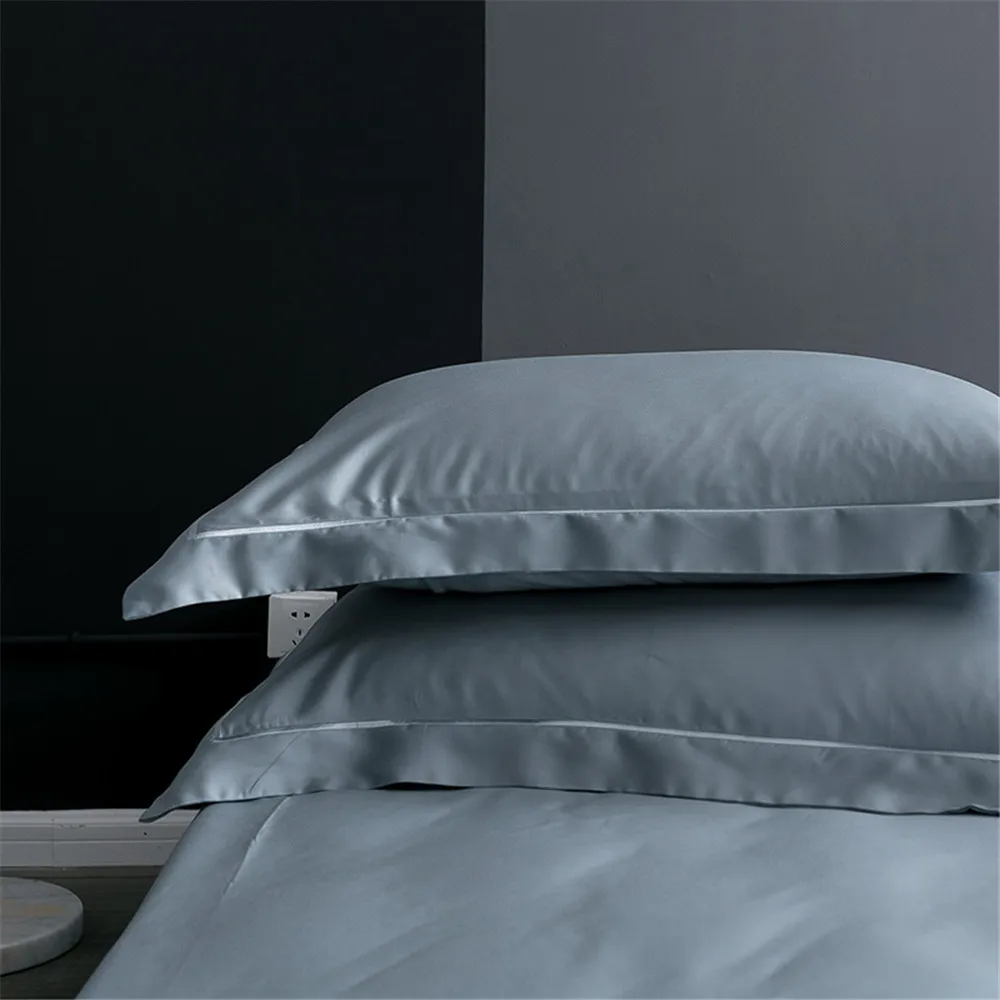
For those seeking premium quality, mulberry silk bedding sets represent the gold standard in luxury sleep surfaces, offering the full range of benefits that have made silk treasured throughout human history.
Drawbacks of Traditional Silk
Despite its luxurious qualities, traditional silk production raises several concerns:
Ethical Considerations
- Silkworm mortality: Conventional silk production involves killing silkworms before they emerge from their cocoons. This process results in billions of silkworms being killed annually for commercial silk production.
- Scale of impact: A single pound of silk requires roughly 3,000 silkworm cocoons, translating to significant numbers even for small batches of fabric.
Environmental Factors
- Resource-intensive cultivation: Growing mulberry trees for silkworm feeding requires substantial land, water, and often pesticides or fertilizers.
- Processing chemicals: Traditional silk production often involves chemical treatments for degumming (removing sericin), bleaching, and dyeing.
- Water usage: Both mulberry cultivation and silk processing require significant water resources, contributing to the textile industry’s overall environmental footprint.
- Limited scalability: The intensive nature of production makes traditional silk less adaptable to sustainable scaling compared to some alternatives.
Practical Limitations
- Premium pricing: High-quality silk typically commands luxury pricing, making it less accessible for everyday use or budget-conscious consumers.
- Special care requirements: Silk often requires gentle hand washing, special detergents, and careful drying to maintain its qualities.
- Vulnerability to damage: Silk can be damaged by prolonged sun exposure, perspiration, and certain personal care products containing alcohol or acids.
For consumers concerned about these issues, exploring choosing silk cruelty-free options or investigating whether is mulberry silk vegan friendly can provide valuable perspective on alternatives that align with specific values.
The Advantages of Plant-Based Vegan Silks
Vegan silk alternatives offer compelling benefits that address many of the drawbacks associated with traditional silk:
Ethical Advantages
- Cruelty-free production: Plant-based alternatives eliminate animal exploitation from the textile production process, aligning with vegan principles.
- Reduced harm: No silkworms are killed, making these options appealing to those concerned about animal welfare.
Environmental Benefits
- Sustainable resource management: Many plant-based alternatives utilize renewable resources with faster regeneration cycles than traditional silk production.
- Reduced chemical dependency: Some vegan silk options require fewer pesticides and fertilizers than conventional mulberry cultivation.
- Closed-loop possibilities: Advanced options like Lyocell/Tencel employ closed-loop production systems that recycle up to 99% of solvents used in manufacturing.
- Biodegradability: Most plant-based vegan silks are biodegradable at the end of their lifecycle, reducing long-term environmental impact.
Practical Advantages
- Lower price point: Vegan silk alternatives are generally more affordable than premium traditional silk, making luxury-feel textiles more accessible.
- Easier care: Most vegan silk options are machine washable and require less delicate handling than traditional silk.
- Increased durability: Many plant-based alternatives resist wrinkling and maintain their appearance with less specialized care.
Different vegan silk types offer unique benefits:
- Lyocell/Tencel: Created from sustainably harvested eucalyptus trees in closed-loop systems, these fabrics offer excellent moisture management and silky softness with minimal environmental impact.
- Bamboo-based options: Utilizing fast-growing bamboo that requires minimal water and no pesticides, these fabrics offer natural antibacterial properties and exceptional softness.
- Soy silk: Made from byproducts of soy food production, this option upcycles waste materials into a protein-based fabric with amino acids that benefit skin.
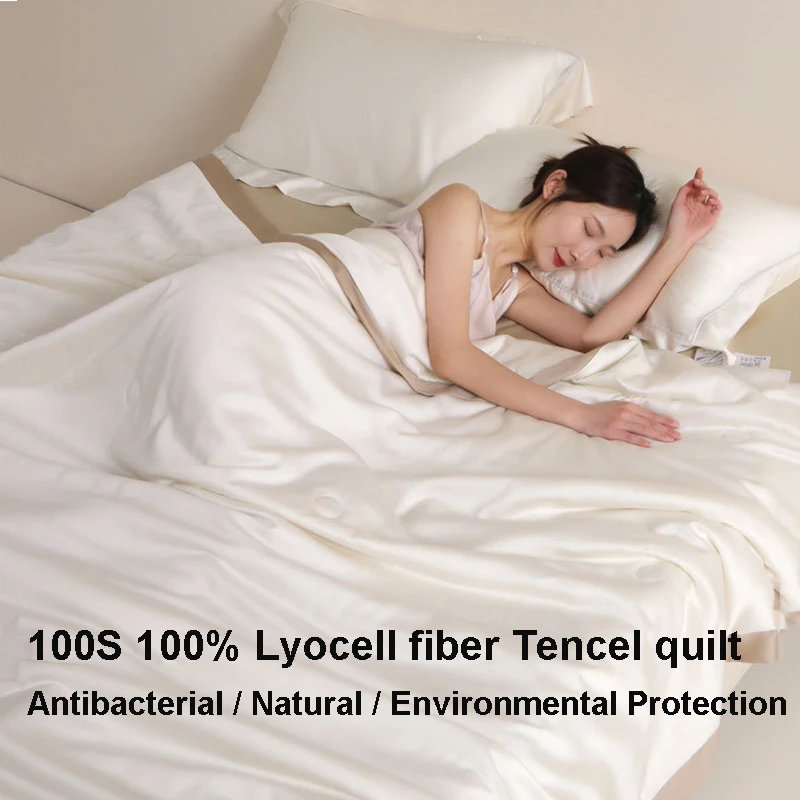
For those interested in exploring animal-friendly options, vegan silk bedding and bamboo silk sheets provide excellent starting points to experience these sustainable alternatives firsthand.
Limitations of Vegan Silk Alternatives
While vegan silk alternatives offer numerous advantages, they come with their own set of limitations:
Performance Considerations
- Texture differences: Even the finest vegan alternatives rarely achieve the exact feel and drape of natural silk. The protein structure of traditional silk creates a distinctive hand-feel that plant cellulose structures don’t perfectly replicate.
- Variable durability: Some vegan alternatives may pill or show wear more quickly than traditional silk, though this varies significantly by specific material and quality.
- Thermal regulation variances: While many alternatives offer good temperature regulation, traditional silk’s protein structure provides unique thermal properties that some vegan options can’t match.
- Moisture management: Natural silk’s exceptional moisture-wicking properties are challenging to fully replicate in plant-based alternatives.
Environmental Nuances
- Processing requirements: Some vegan alternatives require intensive chemical processing to transform plant matter into silk-like fibers. The environmental impact varies widely between production methods.
- Energy consumption: Certain manufacturing processes for vegan alternatives are energy-intensive, potentially offsetting some environmental benefits.
- Material sourcing concerns: Not all plant sources for vegan silk are equally sustainable. For example, bamboo can be sustainably grown, but some production methods involve harsh chemical processing.
Market Considerations
- Quality inconsistency: The quality of vegan silk alternatives varies dramatically between manufacturers and production methods, making it challenging for consumers to predict performance.
- Transparency issues: Some products marketed as “vegan silk” may contain synthetic components or use production methods with significant environmental impacts not disclosed to consumers.
- Evolving technology: As relatively newer materials, some vegan alternatives haven’t benefited from centuries of production refinement like traditional silk has.
Understanding whether is vegan silk as good as real requires consideration of these limitations alongside the benefits. Similarly, exploring the differences between synthetic silk vs natural helps clarify the performance trade-offs between options.
How to Choose: Decision Factors Between Silk and Vegan Alternatives
Selecting between traditional silk and vegan alternatives depends on balancing several personal priorities:
Values Assessment
- Animal welfare stance: If avoiding animal products is your primary concern, vegan alternatives clearly align better with these values.
- Environmental priorities: Consider which environmental factors matter most to you—resource use, chemical processes, biodegradability, or overall carbon footprint.
- Tradition vs. innovation: Some value the historical craft and natural origin of traditional silk, while others prefer supporting innovative sustainable technologies.
Performance Priorities
- Sensory experience: If the distinctive feel of silk against your skin is paramount, traditional silk or premium vegan alternatives like high-quality Tencel may be preferable.
- Durability expectations: Consider how long you expect the product to last and under what conditions it will be used.
- Specific benefits: Determine which properties matter most for your application—cooling effects, hypoallergenic qualities, moisture management, or visual appearance.
Practical Considerations
- Budget constraints: Traditional silk generally commands premium pricing, while vegan alternatives offer various price points, many more accessible than genuine silk.
- Care requirements: If ease of maintenance is important, most vegan alternatives offer simpler care routines than traditional silk.
- Intended use: The best choice may differ depending on whether you’re selecting bedding, clothing, or decorative items.
When comparing natural silk vs alternative fabrics, consider creating a personal priority list ranking these factors based on what matters most to you. This approach can clarify which option best aligns with your unique combination of values, needs, and preferences.
Spotlight on Premium Vegan Silk Alternatives
The landscape of premium vegan alternatives has evolved significantly, with several standout options approaching or even matching traditional silk in certain characteristics:
Advanced Tencel and Lyocell
Premium versions of these eucalyptus-derived fibers feature enhanced manufacturing techniques that create exceptional softness and drape. The finest varieties undergo additional processing steps to achieve:
– Ultra-fine fiber diameter for enhanced smoothness
– Specialized finishing for improved luster and sheen
– Advanced weaving techniques mimicking silk’s distinctive drape
– Natural cooling properties ideal for temperature regulation
These materials excel in moisture management, often outperforming traditional silk in humidity control while maintaining silky smoothness.
Innovative Plant-Protein Textiles
Newer developments in soy-based fabrics have improved their performance through:
– Enhanced protein extraction methods preserving amino acid structures
– Refined spinning techniques creating smoother filaments
– Specialized treatments improving drape and hand-feel
– Natural protein content offering skin benefits similar to traditional silk
Certification and Production Standards
What distinguishes truly premium vegan alternatives is their commitment to both performance and sustainability:
– OEKO-TEX certification ensuring absence of harmful chemicals
– Closed-loop production systems recycling water and solvents
– Transparent supply chains with documented environmental practices
– Rigorous quality control for consistent performance
For those seeking the most luxurious plant-based options, eucalyptus silk sheets and complete eucalyptus silk bedding sets offer exceptional quality that rivals traditional silk while maintaining vegan principles.
Is Peace Silk a Compromise Solution?
Peace silk (also called ahimsa silk or non-violent silk) offers a middle path between traditional silk and vegan alternatives. This approach allows the silkworm to complete its metamorphosis and emerge from the cocoon before the silk is harvested.
The production process differs significantly from conventional methods:
– Moths emerge naturally from cocoons before harvesting
– The broken cocoons are then collected and processed
– The resulting fibers must be spun rather than reeled due to the broken nature of the filaments
– The fabric typically has a slightly different texture than conventional silk due to these production differences
From an ethical perspective, peace silk addresses the primary concern of silkworm killing. However, it still relies on silkworm cultivation and the use of animals in textile production. Many strict vegans still consider peace silk problematic since the moths remain captive and bred specifically for human use.
Quality-wise, peace silk generally has a more textured appearance and feel compared to conventional silk’s smooth surface. The shorter fibers create a fabric that’s often slightly less lustrous and may have a more “slubbed” texture.
While peace silk represents a step toward more compassionate production, it occupies a complex middle ground in the vegan silk vs natural silk comparison, potentially appealing to those seeking to reduce but not eliminate animal impact in their textile choices.
Care and Maintenance Comparison
Proper care significantly affects the lifespan and performance of both traditional silk and vegan alternatives:
| Care Aspect | Traditional Silk | Vegan Alternatives |
|---|---|---|
| Washing | Hand wash recommended or delicate machine cycle with silk-specific detergent | Most machine washable on gentle cycle with mild detergent |
| Water Temperature | Cold water only | Cold to warm water depending on specific material |
| Drying | Air dry flat away from direct sunlight | Most can be tumble dried on low heat |
| Ironing | Low heat with press cloth if needed | Low to medium heat as needed |
| Stain Treatment | Immediate attention with specialized products only | More forgiving with standard stain removers |
| Storage | Breathable bags away from sunlight | Standard storage suitable for most types |
Traditional silk requires more careful maintenance, including:
– Protection from direct sunlight which can degrade fibers
– Avoidance of alcohol-based perfumes and deodorants that can damage the fabric
– Protection from rough surfaces that may catch and pull delicate fibers
– Seasonal storage considerations to prevent moisture damage or insect issues
Most vegan alternatives offer simpler care routines while still requiring basic textile maintenance. This difference in care requirements represents a significant practical advantage for many consumers when comparing the silk vs vegan silk differences.
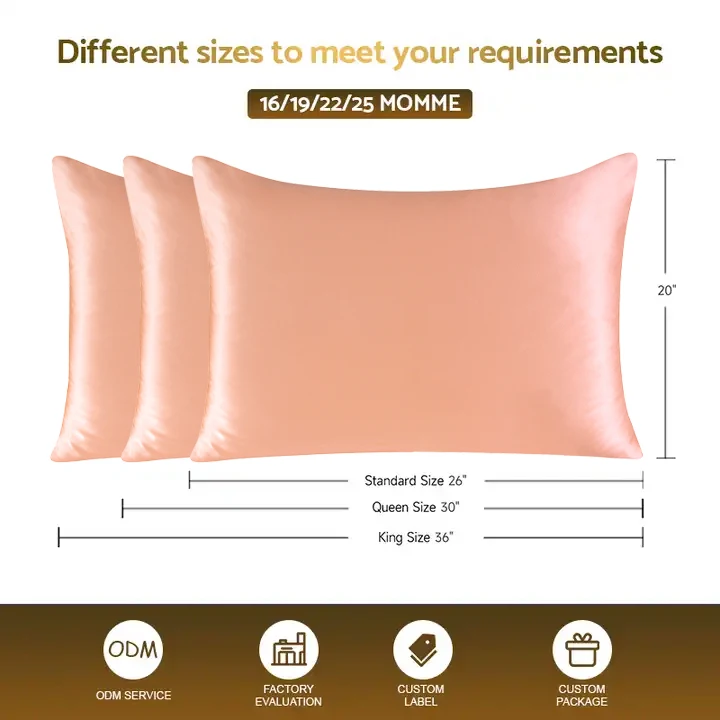
Are Vegan Silks Always More Sustainable?
The sustainability of vegan silk alternatives varies significantly based on multiple factors, challenging the assumption that “vegan” automatically equals “more sustainable”:
Production Variations Matter
- Some plant-based alternatives require intensive chemical processing that may create significant environmental impacts
- Water usage varies dramatically between different vegan silk types, with some requiring substantial irrigation
- Energy consumption in processing can offset raw material sustainability benefits in some cases
- Transportation impact depends on where materials are grown and processed
Supply Chain Transparency
- Certifications like OEKO-TEX, GOTS (Global Organic Textile Standard), and FSC (Forest Stewardship Council) help identify truly sustainable options
- Closed-loop production systems significantly reduce environmental impact compared to open manufacturing processes
- Biodegradability varies between different vegan alternatives, affecting end-of-life impact
Sustainability Innovations
- Newer production methods continue improving resource efficiency for both traditional and vegan silks
- Recycled and upcycled options are emerging in the vegan silk category
- Water recycling systems are reducing the impact of both traditional silk and vegan alternatives
When evaluating sustainability claims, it’s important to look beyond marketing terms and examine specific production practices. The most sustainable choice often depends on multiple factors beyond simply whether the material is animal-derived or plant-based. For comprehensive information on truly sustainable options, exploring a vegan silk bedding guide can provide valuable insights into specific products and their environmental credentials.
100% Silk Sheets, Green Silk Sheets, King Size Silk Bedding Set, Mulberry Silk Bedding Sets, Queen Size Silk Bedding Set
Price range: $1,246.21 through $1,615.22 Select options This product has multiple variants. The options may be chosen on the product pageEucalyptus Silk Bedding Sets, Eucalyptus Silk Sheets
Price range: $360.24 through $393.60 Select options This product has multiple variants. The options may be chosen on the product page- Price range: $267.82 through $306.55 Select options This product has multiple variants. The options may be chosen on the product page
Bamboo Silk Sheets, Cooling Silk Sheets
Price range: $130.76 through $177.80 Select options This product has multiple variants. The options may be chosen on the product page100% Silk Sheets, King Size Silk Bedding Set, Mulberry Silk Bedding Sets, Queen Size Silk Bedding Set, White Silk Sheets
Price range: $1,000.79 through $1,351.42 Select options This product has multiple variants. The options may be chosen on the product pageBamboo Silk Sheets, Queen Size Silk Fitted Sheet
Price range: $230.24 through $297.88 Select options This product has multiple variants. The options may be chosen on the product page
Frequently Asked Questions About Silk and Vegan Alternatives
Do vegan silks feel as luxurious as real silk?
Premium vegan alternatives can achieve remarkable softness and drape, with some high-quality options coming very close to traditional silk’s feel. However, the protein structure of natural silk creates a distinctive hand-feel and thermal properties that even the finest vegan alternatives don’t perfectly replicate. Personal preference plays a significant role in determining which feels more “luxurious” to individual users.
Which vegan silk alternative is most similar to traditional silk?
High-quality Tencel and lyocell products typically come closest to mimicking traditional silk’s drape, sheen, and smooth feel. Premium versions with specialized finishing techniques achieve remarkable similarity in appearance and hand-feel, though slight differences remain in moisture absorption and thermal properties.
Are vegan silks more affordable than traditional silk?
Generally, yes. Most vegan alternatives are available at lower price points than comparable quality traditional silk. However, there’s significant variation within both categories, with premium vegan options sometimes approaching or exceeding the cost of mid-range traditional silk.
How can I tell if a product is traditional or vegan silk?
Product labeling should indicate the material composition. Traditional silk will be labeled as “silk” or “100% silk,” while vegan alternatives will specify materials like “lyocell,” “Tencel,” “bamboo rayon,” etc. If uncertain, contacting the manufacturer for clarification is recommended.
Do vegan silks offer the same health benefits as traditional silk?
Vegan alternatives can provide some similar benefits, particularly in terms of moisture management and temperature regulation. However, traditional silk’s protein structure offers unique properties like amino acid content and exceptional smoothness that may provide additional skin benefits. For those seeking silk bedding alternatives with specific health properties, researching the particular benefits of each material type is recommended.

